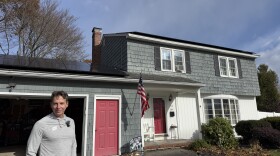A new study says rising seas could threaten more than 5,000 homes on the New Hampshire Seacoast by the end of the century.
The Seacoast properties at risk from chronic flooding pay more than $33 million in property taxes, according to the national report from the Union of Concerned Scientists.
In total, the study found that sea level rise could threaten close to a trillion dollars’ worth of property – housing 4.5 million people – across the continental U.S. by the end of the century.
Lead climate analyst Erika Spanger Siegfried says they used data from the real estate website Zillow to see how many coastal properties would face flooding roughly every other week at high tide under different sea level rise scenarios.
"We certainly are able to put it in economic terms, [but] I think it’s even more visceral than that,” she says. “We're putting it in terms of homes, and for most of us, that's our greatest asset, if we are in fact a homeowner.”
She says the Seacoast’s low-lying, tide-sensitive geography and dense population make it particularly vulnerable. Even under lower sea level rise projections, the study says New Hampshire’s coast could see at least $622 million worth of property threatened by the year 2100.

Under higher projections, much of that property will be threatened much sooner , within 15 years. The report says Hampton Beach is the most vulnerable to climate change of any Seacoast community, with about a third of its property tax base and population facing chronic inundation – the kind Spanger Siegfried says people can’t live with – if seas rise eight feet by 2100.
“We’re seeing [low-lying Seacoast areas] flooding today with the so-called king tides,” she says. “So adding sea level to that tidal variability is only going to increase the frequency of those kind of tides, and also increase the reach of tides.”
And she says some sea level rise is now basically inevitable, or “baked in the cake,” as the climate changes.
“But there are changes that we can make that could have an influence on the longer-term pace of sea level rise,” she says. “And we should engage.”
Spanger Siegfried says public officials, developers and investors should use studies like this one to plan for rising tides and to reduce their impact.
Map: Click the dots to see what's at risk in New Hampshire's coastal communities if seas rise by 1-2' by 2030 and 8' by the end of the century
Data: Union of concerned scientists. Click here for the full report.








